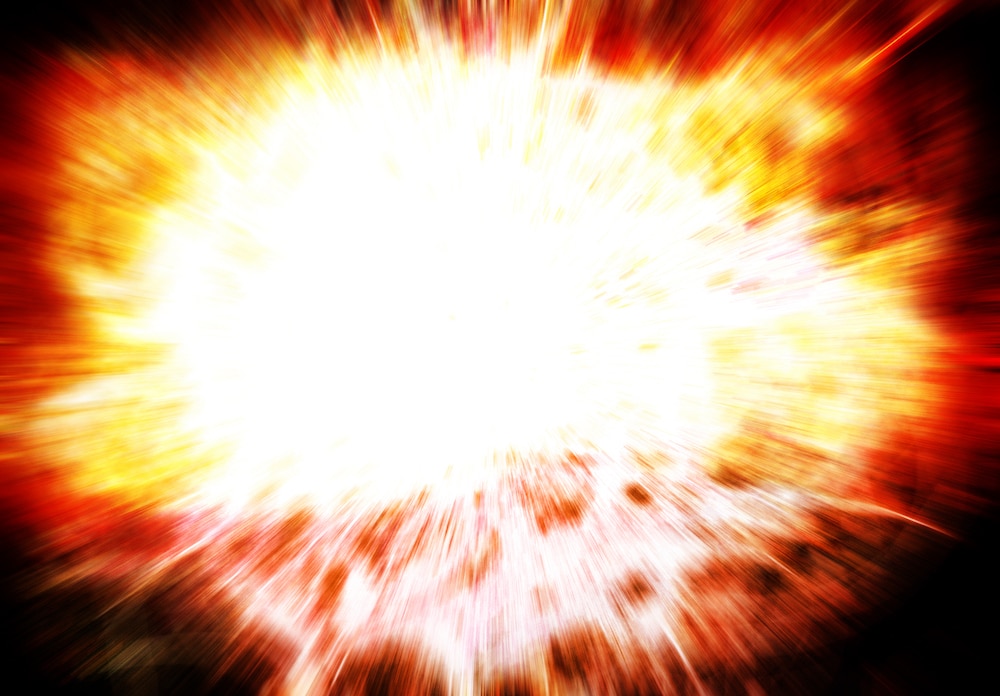Create a free profile to get unlimited access to exclusive videos, sweepstakes, and more!
Instead of a Big Bang, there could have been… a Big Bounce?
The universe might have literally bounced into being.

Whenever you hear about the dawn of the universe, you’re probably also going to hear something about the Big Bang. But wait. What if it didn’t all happen with a bang?
What is known as the Big Bang was less of a bang and more of an ultrafast expansion from an infinitely tiny cosmic singularly, whose heat and density were also infinite. Enter the ekpyrotic model of the universe. Like the Big Bang theory, it still assumes the universe expanded and cooled down, and that it is still expanding — but rewind far back enough and there was no singularity. This might sound like a plot twist from Doctor Strange, but it is possible.
The ekpyrotic model proposes that the universe has no beginning or end. Instead of a bang, what happened is thought of as a “Big Bounce”, the moment at which the universe, which was slowly contracting to an incredibly, but not infinitely, small point, “bounced” to expansion. It is based on string theory, which sees particles as one-dimensional strings. Physicists Robert Brandenberger and Ziwei Wang coauthored a study venturing deeper into the ekpyrotic emergence of the universe in Physical Review D.
“The challenge for ekpyrotic cosmology is to obtain a transition between the contracting phase and our current phase of Standard Big Bang expansion,” Brandenberger told SYFY WIRE. “To obtain this in a controlled manner has been difficult, and that is where our work comes in.”
General relativity and quantum mechanics often butt heads. Because string theory tries to bring together all four fundamental forces, it could possibly unify general relativity, which sees the universe on a huge scale, and quantum mechanics, which sees it on an extremely small scale. While general relativity suggests a smooth and predictable universe, quantum mechanics sees it as a realm of chaos where you can only use probabilities to predict things. If both are applied to the Big Bang theory, they break down.
Ekpyrotic theory is not exactly a contradiction of the Big Bang (that would mean the universe isn’t expanding at all). Think of it as more of an extreme revision to an incomplete theory that would end up with an epic fail of a universe. This universe would have no mechanism for creating galaxies and other huge structures, so the Big Bang theory needs additional theories to explain what happened in the very nano-nano-nanoseconds the universe as we know it began to exist. These theories lead to results that match current observations.
“We show that the fluctuations generated during the phase of contraction (starting with quantum vacuum perturbations) develop into spectra of cosmological perturbations which are consistent with current observations,” he said.
What Brandenberger and Wang found out was that ekpyrotic contraction would have made it possible for to get everything lined up in a way that would also match current observations. However, to do that, you need to hypothetically produce a bounce in a controlled way, which they were able to do. The absence of a singularity prevents this theory from breaking down. While the Big Bounce may not necessarily be the ultimate about the birth of the universe, Brandenberger thinks it has an edge over inflationary theory, which involves a singularity.
After the Big Bounce, matter would have been evenly distributed throughout the universe to begin with, which solves another Big Bang problem. Inflationary theory says that the universe started out infinitely hot and dense in that singularity before wildly expanding. The thing is, if the Big Bang theory had no assist from inflationary theory or another adjacent theory, you’d end up with a universe that started with uneven globs of matter all over. Not that the universe would stay homogeneous forever. With gravity acting unstable and moving things around over aeons and aeons, our universe is much messier now than it was around 15 billion years ago.
“The standard Big Bang theory with an initial singularity is incomplete,” Brandenberger said. “We are not saying that the Ekpyrotic scenario is the best, but it has an advantage over the current paradigm of early universe cosmology.”
Even weirder is that we could be living in a universe with extra dimensions. This is also based on string theory. It also can allow for more than the four dimensions—the three dimensions of space (which we can see) and one of time (which we can't)—that we already have. We might be living in ten dimensions and not know it, since the extra dimensions would not be visible to the human eye. Who knows what crawled out of the early universe.
"String theory predicts that space has nine dimensions," said Brandenberger. "There are the three which we see, and there are six
others which are wrapped up so small that we do not see them."
That would blow Doctor Strange’s mind with or without supernatural powers.


























